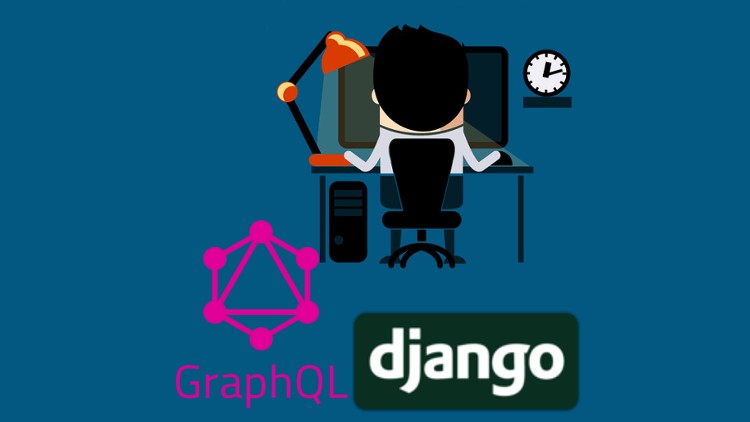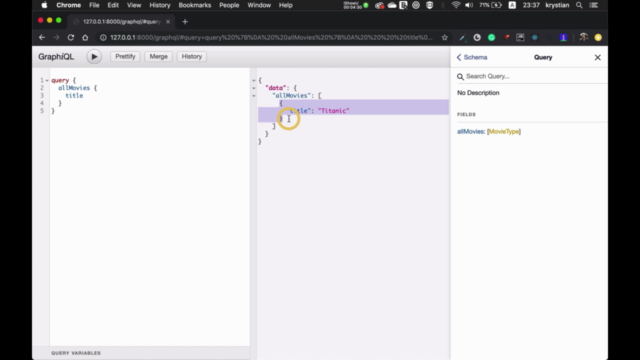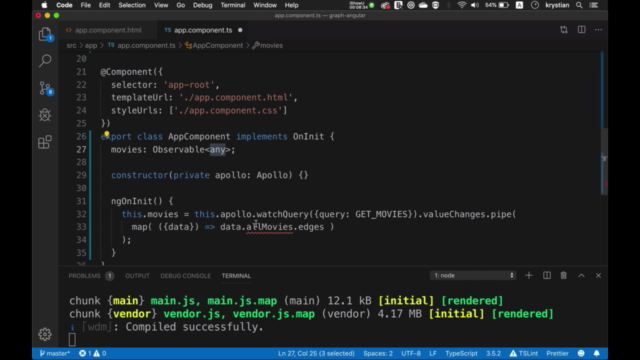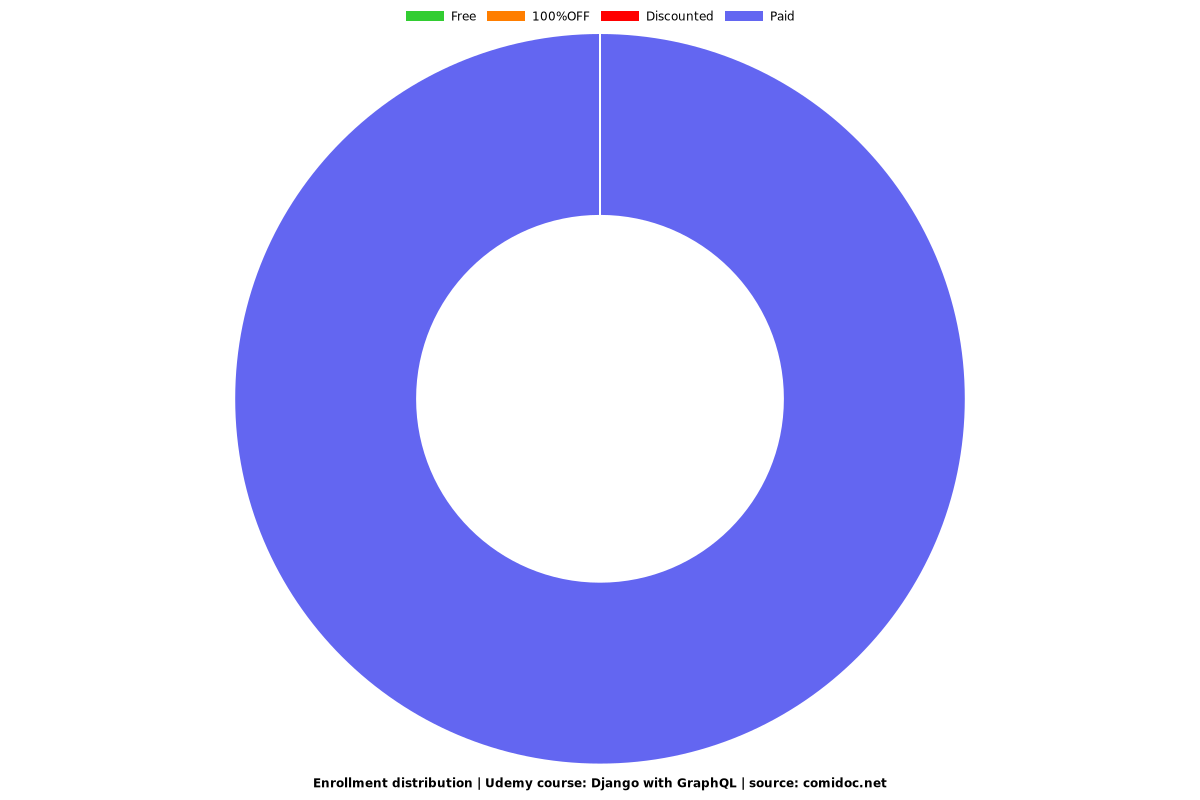Django with GraphQL
Integrating GraphQL API with Django Framework
4.30 (297 reviews)

1,952
students
4 hours
content
Aug 2019
last update
$54.99
regular price
What you will learn
Basics of Django Framework
Basics of GraphQL
How to build GraphQL API with Django
Why take this course?
🎉 **Master Django with GraphQL: The Ultimate Course** 📚✨
**Course Headline:**
Integrating GraphQL API with Django Framework
**Course Description:**
Welcome to the comprehensive guide to integrating GraphQL into your Django applications! Whether you're a seasoned Django developer or new to the framework, this course will equip you with the knowledge and skills to leverage the power of GraphQL within your projects. 🚀
**Why GraphQL?**
- **Understanding GraphQL:** We'll explore what GraphQL is, its advantages over traditional REST APIs, and the potential drawbacks so you can make an informed decision on whether it's right for your application.
- **Core Concepts:** Dive deep into the main concepts of GraphQL, including schemas, types, queries, mutations, and subscriptions, to understand how they work together harmoniously.
**Getting Started with Django:**
- **Plain Django Project Setup:** We kick off by creating a basic Django project from scratch. No prior knowledge of Django is required – we've got you covered!
- **Django Fundamentals:** This introduction will set the foundation for what follows, ensuring you're comfortable with the Django framework before adding GraphQL.
**Integrating GraphQL:**
- **Setting Up GraphQL:** Learn how to integrate a GraphQL API into your existing Django project or follow along with the project we'll build together from the ground up.
- **Creating a Root Schema:** Understand the importance of a root schema and how it serves as the entry point for all GraphQL operations.
- **Schemas for Apps:** Discover how to create schemas that represent your Django apps, making your data easily accessible through a single endpoint.
- **GraphiQL Interface:** Get hands-on experience with graphiql, the interactive UI for executing GraphQL queries and mutations.
**Advanced GraphQL Features:**
- **Type Definitions:** Explore how to define Types in GraphQL, including scalar types, object types, enum types, interface types, and more.
- **Queries and Mutations:** Learn the different ways to write queries and mutations, from simple to complex, and understand why certain patterns are preferred.
- **Extras:** Enhance your GraphQL implementation with advanced features like Token Authentication (JWT), Relay connections, custom Filters, and Pagination to handle large datasets efficiently.
**Real-World Applications:**
- **Front-End Integration:** See how to connect our backend GraphQL API with front-end applications using both React and Angular.
- **Using Apollo Library:** Gain practical experience in utilizing the Apollo library on the front end to interact with our GraphQL API.
- **Sample Projects:** We'll conclude the course by demonstrating how to use our backend GraphQL API in real-world scenarios, providing you with valuable insights and code samples to take away.
Join Krystian Czekalski on this journey to become proficient in integrating GraphQL with Django, and elevate your web development skills to new heights! 🎓
**Key Takeaways:**
- A deep understanding of GraphQL and its integration with Django.
- Hands-on experience with schemas, types, queries, mutations, and subscriptions.
- Practical knowledge of advanced features like JWT authentication and Relay implementations.
- The ability to connect your backend GraphQL API with front-end applications using React or Angular.
- A solid foundation for creating scalable, efficient, and maintainable web applications.
Enroll now and transform the way you build web applications! 🛠️🚀
Screenshots




Our review
🌟 **Course Overview** 🌟
The Global course rating stands at an impressive **4.35**, with all recent reviews being positive. The majority of the feedback praises the course for its informative content, clarity in explanation, and practical applicability in real-world scenarios. Here's a detailed breakdown of the course's strengths and areas for improvement based on the reviews:
**Pros:**
- 🎓 **Informative Content**: Reviewers found the course very informative, particularly regarding the GraphQL specification and its integration with Django, as well as the use of Graphene and Apollo.
- 🧭 **Well-Structured Explanations**: Instructors were commended for their ability to explain complex concepts clearly and for showing how to handle failures and recover from them.
- 🚀 **Practical Application**: Several reviewers were able to implement a production solution immediately after watching the videos, highlighting the course's practical approach.
- 🤝 **Engaging Instructor**: Krystian Czekalski was specifically thanked for his clear and timely responses to questions.
- ✨ **Good Introduction**: The course was described as an easy-to-understand, hands-on introduction to Django and GraphQL.
- 🌱 **Useful for Beginners**: Python developers looking to learn about GraphQL recommended this course for its comprehensiveness and clarity.
**Cons:**
- 📈 **Incomplete Concepts**: Some reviewers felt that the explanations could be more comprehensive, with a desire for more detailed reasoning behind choices made during implementations.
- ➡️ **Lack of Motivation**: A few comments pointed out that information was presented without adequate motivation or explanation of the reasoning behind certain approaches.
- 📝 **Subscriptions and Advanced Features**: There were requests for a more thorough explanation of GraphQL subscriptions, which were mentioned in the intro but not covered in detail.
- 🛠️ **Code Implementation Details**: Some content was criticized for being too technical or for skipping over explanations, with a suggestion to break down more complex concepts into simpler steps.
- 📚 **Incomplete Content**: The course was noted as being somewhat brief but effective at addressing common doubts about GraphQL integration within Django applications.
- 🤔 **Alternative Implementation Desired**: A preference for alternative implementation methods to Relay for pagination and filtering was expressed by some users.
- 📝 **Version Specification**: It was suggested that the version of Graphene used should be specified, as newer versions use different implementation patterns (`(root, info)` instead of `(self, info)`).
- ⬆️ **Improvement Recommendations**: A few reviewers provided suggestions for improvements, such as separating out the introduction of Relay from the first implementation and ensuring that all parts of CRUD are implemented in the final sections.
**General Feedback:**
- The course was generally found to be clear, easy to grasp, and concise, meeting the expectations of those with some Django knowledge looking to get rolling with GraphQL.
- The course is recommended for its logical order and clear explanations, with the caveat that it would be even better if it included all the features mentioned in the introduction, such as subscriptions.
In summary, this course is well-received for its educational value and practical approach to teaching Django, Python, and GraphQL integration. While there are areas where additional detail or alternative viewpoints could enhance the learning experience, the course stands out as a valuable resource for beginners and intermediates alike. To fully meet the learners' expectations, it would benefit from addressing the mentioned gaps, particularly in covering subscriptions and providing more detailed explanations for advanced features.
Charts
Price

Rating

Enrollment distribution

2445302
udemy ID
7/5/2019
course created date
10/19/2019
course indexed date
Bot
course submited by